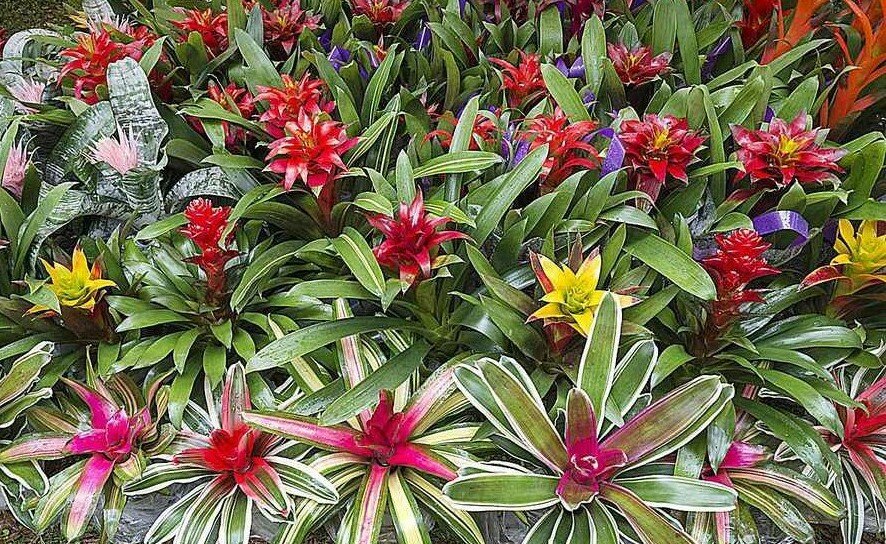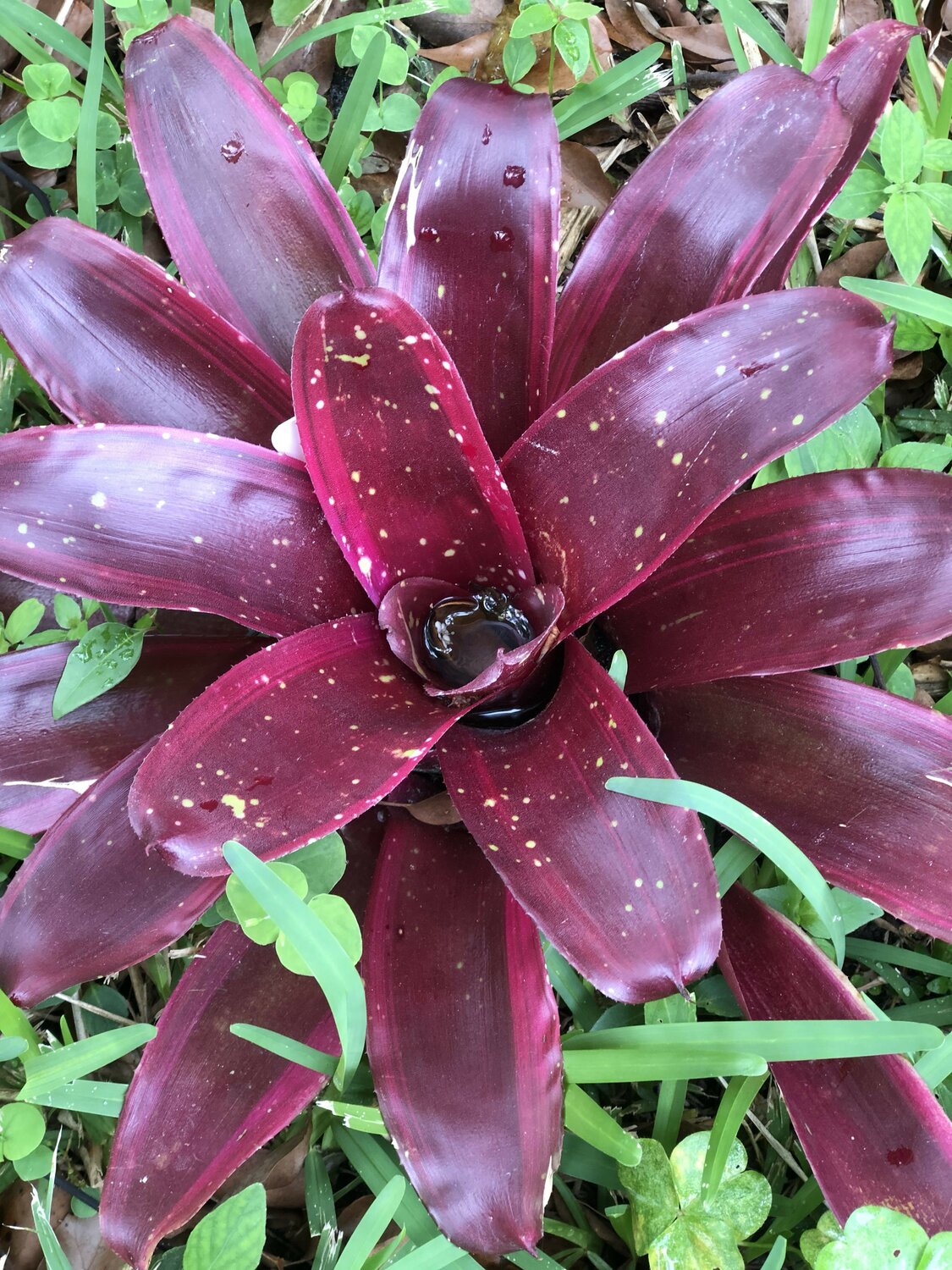Kathy’s Gardening Guide: Bromeliads
Tropical landscapes gain interest and color with the addition of bromeliads. These unique plants feature decorative leaves in red, green, purple, orange and yellow. Leaves may have stripes, spots or bands and often form rosettes that can hold water.
Bromeliads can grow up to three feet tall, but they are slow growing and may take one to three years to mature. Although bromeliads only flower once before dying, they produce a bloom that is stunning and unique. The main plant also produces “pups” that can be cut off and cultivated into new plants.
There are two types of bromeliads. The majority are called epiphytes, or “air plants” and include the well-known Spanish moss. These bromeliads grow on trees, rocks, logs and other plants. Air plants cling to other plants for support, but they are not parasites. They get their own energy through photosynthesis, absorbing nutrients into their leaves. The smaller bromeliad category grows in soil; an example of these terrestrial bromeliads is a pineapple.
As a natural rain forest plant, bromeliads love a hot, moist environment. When selecting a bromeliad for your home, be sure to check the amount of light in the location you are considering. Although some types of bromeliads enjoy full sun — such as dyckia — most prefer partial, filtered sun for best growth.
Bromeliads love humidity, but be careful not to overwater. If growing a terrestrial bromeliad, keep the soil consistently moist but not soggy. If your plant’s leaves form vase-shaped rosettes, add water to these cups at the base of the leaves. These cups should stay full of water, but you can flush them out by adding and dumping clean water before refilling. Bromeliads can be very low maintenance — just place them under a shady tree and enjoy!
Several popular types of bromeliads in our area include:
- Lila — This tropical beauty loves humidity! It is a great choice to add color and texture to beds and borders. Lila is an air plant that will produce new pups off the main clump.
- Royal burgundy — Hence the name, royal burgundy bromeliads have long, deep red leaves that feature green spots. Royal burgundy is an air plant that can attract butterflies, and the cup often becomes a home for insects and frogs.
- Tiger — Another air plant, the tiger bromeliad is known for dark bars of color on light green leaves. It requires little maintenance and enjoys a humid climate. Tiger makes a nice ground cover, accent plant or border in a bed that receives at least partial sunlight.
Happy planting!
Flower of the Week: Royal burgundy bromeliad
Please email Kathy at kcg.pvr@gmail.com for any questions or gardening tips you would like to see in the future. For more information & ideas, visit Kathy’s Creative Gardens & Nursery, 196 N. Roscoe Blvd. The phone number is 904-655-7373.











